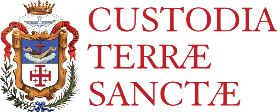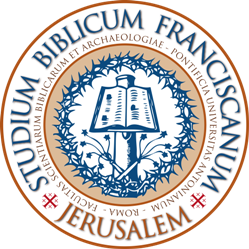“Encountering the other: faith, art and dialogue at the Terra Sancta Museum Art & History”
Since his arrival at the Terra Sancta Museum Art & History on October 23, 2024, Italian Claudio Donà Domeneghetti has been working to bring the museum’s treasures to the Israeli public. We went to meet him.
A personal journey through culture, faith and beauty
Claudio, how did you come to work at the museum?
I have a degree in International Relations from the University of Padua (Italy), and these have always held a deep fascination for me. Growing up in a multicultural family and living between Brussels and Italy brought me into contact with people from different cultures and educational backgrounds, developing not only a facility for moving in diverse environments, but also a genuine curiosity for understanding the different ways in which people perceive the world. In addition, my life has always been deeply influenced by beauty and a connection with history, thanks to my family. The experience at Terra Sancta Museum Art & History therefore allows me to connect different facets, and faith, art and history intertwine with international relations.

You worked on the research seminar proposed by Yisca Harani. How did you come into contact with her?
Yisca Harani is a rare person, an Israeli researcher and lecturer in the history of Christianity. I find her extremely brilliant. The initial contact came from her, at the beginning of my experience here in Jerusalem. She had approached Brother Stéphane Milovitch, Director of the Board of Directors of the Terra Sancta Museum Art & History, to organize a visit as part of his seminar. The aim of the seminar was to bring Israelis from different parts of the country to Jerusalem to learn about the historical and current relationship between the popes and the Holy Land. So I was asked to organize the meeting, and that’s how I met Yisca for the first time.

Cultural mediation for a curious and committed Israeli public
How did the seminar go?
In fact, three editions of the seminar were organized, proof of its success! The visit takes place over two days: the first day, during which we present a selection of papal gifts to the Holy Land, and the second day is devoted to the Holy Sepulchre where, by special request, we illustrate Pope Paul VI’s visit with some of the mosaics in the basilica. The aim is to show that these visits and the Popes’ attachment to the Holy Land are tangible. Visits begin in the Convent of Saint-Sauveur, where the Salle de la Nacre is located. Brother Stéphane usually illustrates the history of the Custody and its relationship with the Popes, explaining the fundamental role of the brothers and their mission in the Holy Land and holy places. Then, we volunteers share the motivations that brought us on mission here, specifically to the Museum, which is always of great interest to the public. They want to understand what motivates young people from different parts of Europe to come to this land marked by so much conflict today. The tour concludes with a question and answer session and a free moment to admire the works in all their splendour.
Each visit was an opportunity to improve the next. We analyzed the public’s points of interest so that we could reinforce them on future visits and better prepare ourselves for the most frequently asked questions. As a result, my discourse has changed, as has my ability to create a more direct and relevant link with the public, in line with their interests and ours.


A museum as a bridge between peoples and traditions
Who is the target audience? And how did they react?
The event is generally aimed at an adult Israeli audience, ranging in age from 30 to 70, and each edition has recorded a turnout of around 40 people. I have to admit that their receptiveness really surprised me. Not only were they extremely interested, but also deeply curious, with many pertinent questions, far from being superficial for objects with which they were not familiar. Of course, some of these questions might seem trivial from a Christian point of view, but for those who aren’t, they’re essential. In this connection, I recall the words of Brother Stéphane, who told me that it is often precisely the simplest questions, asked by those who observe us from the outside, that stimulate the deepest reflections on our being. This was the case for me: I had the opportunity to question myself on basic but fundamental aspects of our liturgy and our faith. This enabled me not only to explain certain aspects, but also to clarify them. I believe this is one of the riches of inter-religious dialogue.
Why is the museum involved in these initiatives?
These are valuable, multi-faceted communication and mediation opportunities. First and foremost, they promote the future museum and its imminent opening in 2028, as well as showcasing an integral part of the Terra Sancta Museum Art & History’s magnificent collection, a much wider heritage that will come to life in the heart of Jerusalem. In addition, they are a fundamental opportunity to illustrate to the public the historic role of the Church in this land. A land today inhabited by peoples who sometimes know little about Christianity. Through these encounters, the museum hopes that they will discover another reality of this land.


Finally, for us Catholics, these occasions are essential for sharing our faith through the beauty created by devotion to God over the centuries. In this way, we wish to show and create opportunities for dialogue, by presenting the splendor that Christian artistic genius has been able to express throughout history. Yisca Harani made me realize that with the creation of this museum, the Custody is realizing a much larger space than it perhaps imagined. Indeed, this institution will not only be useful for reaching out to others and creating a dialogue with them, but it will create a space for anyone actively or not engaged in dialogue. It represents both a point of openness to the outside world, and a way for the world to learn more about the Custody of the Holy Land and the role of the Catholic Church.



